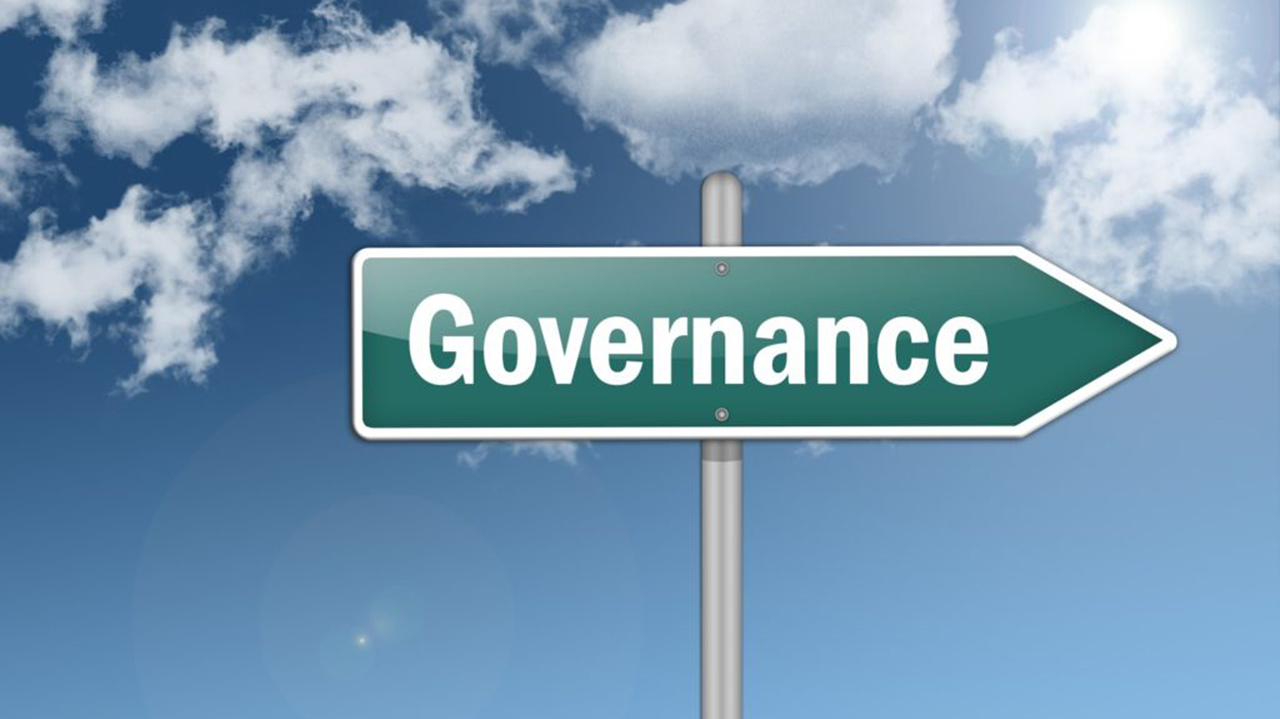The Oronsaye Report: The Messiah of The High Cost of Governance in Nigeria?
INTRODUCTION
Following the announcement of fuel subsidy removal on 29th May 2023, during the President’s inaugural speech, there has been increased hardship in Nigeria. Many condemned the removal because it was premature and inopportune. On its part, the government promised some palliatives to cushion the effect of the subsidy removal. This did not however solve the problem of inflation. The rising inflation and other economic problems plaguing Nigeria have made the government look inward for a significant way to improve the economy. A major step the government has taken in this direction is the attempt to reduce the cost of governance through the implementation of The Oronsaye Report.
This report is a significant document in Nigeria’s public administration. It has sparked many discussions and debates about its efficacy in reducing the cost of governance. The quandary of this writer is “Whether the Oronsaye Report is the messiah of the high cost of governance”. This article is divided into four parts. It begins by explaining the Oransaye Report, then dsicusses the implementation of the Report. It continues with an analysis of the implication of the implementation of the Report, then answers the question of whether the Report is the messiah of the high cost of governance.
WHAT IS THE ORONSAYE REPORT?
The Oronsaye Report is named after Mr. Stephen Oronsaye, a former Head of Service under President Goodluck Jonathan’s administration, who chaired the Presidential Committee on the Rationalization and Restructuring of Federal Government Parastatals, Commissions, and Agencies. The Report seeks to address concerns about duplication, redundancy, and inefficiency in the federal civil service which is a contributory factor to an escalation in the cost of governance. The 800-page report recommended that 263 of the statutory agencies be slashed to 161; 38 agencies be scrapped; 52 be merged and 14 be reverted to departments in various ministries.
The rationale for restructuring and rationalization of Agencies, Parastatals, and Commissions is to meet the global socio-economic challenges that have rendered it inevitable for the Government to cut the cost of governance while ensuring accountability. Some principles upon which the Report was formulated include there is no need to create another body to perform the functions of an already existing statutory entity, and the reform would ensure efficient and effective management of Government structures and functionaries to guarantee better service delivery and good governance.
IMPLEMENTATION OF THE ORONSAYE REPORT
To reduce the cost of governance, several reform committees have been constituted since the beginning of the 4th Republic, starting with the Ahmed Joda panel of 1999, under the Obasanjo Administration. In 2011, President Goodluck Jonathan’s Administration also
constituted the Steve Oronsaye Committee on the Rationalisation of Federal Government Parastatals and Agencies. The Buhari Administration also constituted the Amal Pepple Committee to review the Oronsaye report, and to cover the 2012 to 2021 period, which was not under the review of the Oronsaye report. Another Committee was constituted under the Chairmanship of Ebele Okeke, to produce a white paper on the two reports. But just like the White Papers under President OBJ and President Goodluck went unattended to, the Buhari Administration also did not implement the reports, nor the recommendations of the White Paper it produced.
Unlike previous administrations that failed to implement the Report, the President Tinubu Administration is set to do so. The Special Adviser to the President on Policy Co-ordination and Implementation, Hadiz Bala Usman made the announcement on the 26th of February It is envisaged that about one trillion naira will be saved upon implementation. The President constituted a Committee to carry out these reforms, and they have been given a time frame of twelve weeks to carry out the mergers of the affected agencies and institutions.
Consequently, twenty-nine government agencies will be merged and eight parastatals will be subsumed into eight other agencies. Also, four agencies will be relocated to four various ministries, while one will be scrapped. The ICPC and the EFCC will be under one roof as one Anti-corruption agency. BPE would be merged with the Infrastructure Concession and Regulatory Commission, ICRC. The National Commission for Museums would be merged with the National Gallery of Arts. NACA will be merged with the National Agency for Disease Control. The Oil and Gas sector too will have some regulatory agencies coming together under one roof. In the education sector, Nomadic Education Commission would be merged with the Commission for Mass Literacy and Adult Education. Salaries and Wages Commission is to be merged with the Revenue Mobilisation and Fiscal Allocation Commission. Border Communities Development Agency to become under the National Boundaries Commission. NEMA and Refugees Commission to become the National Emergency and Refugees Management Commission. The list is very exhaustive with the Federal Government having close to 600 agencies and parastatals.
IMPLICATION OF THE IMPLEMENTATION OF THE REPORT
The Oronsaye report aims to reduce the cost of governance. In doing so, some agencies have to be scrapped, others merged, and some others subsumed. This exercise implies that there will be a restructuring and some employees in the affected agencies will lose their jobs. This fact is contrary to the Minister of Information and National Orientation’s statement. As captured in the online Punch news dated February 28th, 2024, the Minister of Information and National Orientation, Mohammed Idris, claimed that the implementation exercise would not lead to job losses and redundancies in the affected agencies. I wonder how this could be.
It may be possible practically, but it is economically unwise.
It is unreasonable not to lay off some workers in the course of this exercise if the aim is really to cut down the cost of governance. The payment of wages and fringe benefits is a cost of governance. Reduction in the staff of the federal civil service is of benefit to the economy. Over half of the agencies came into existence during periods of democratically elected governance, with the prevailing government often seeking favor with National Assembly members, political parties, and other political entities to leverage political gains. Consequently, this trend escalated recurrent government spending not just in terms of salaries and wages but also through excessive and corrupt practices, reflected in the repetitive inclusion of numerous line items in the budgets of these agencies over successive years.
Having established the fact that there will certainly be a loss of jobs, it is safe to assume that there will be a sudden bloat in unemployment figures. Are there measures in place to cushion the effects, if many civil servants lose their jobs? This question is pertinent following our experience since the fuel subsidy removal. Although fuel subsidies have been removed from government expenditure, there have been no corresponding proactive measures to address the repercussions and hardships stemming from this policy shift. Both the subsidy removal and the floating of the naira have inflicted significant hardships on the populace. As a result of
this, basic necessities, such as food, have become unaffordable.
There is a pressing need for more effective mechanisms surpassing those established for subsidy removal, to mitigate the challenges that may follow the implementation of the Oronsaye Report. Otherwise, the economic plight of the populace is poised to worsen,
potentially doubling the hardship experienced in the country.
IS THE ORONSAYE REPORT THE MESSIAH OF THE HIGH COST OF GOVERNANCE?
The term “Messiah” denotes a deliverer or savior. A Messiah changes the quality of a person’s life for good. Is that what the Oronsaye Report represents in terms of the high cost of governance in Nigeria? I think not. According to Olu Fasan, “The Oronsaye report is too
peripheral in the face of Nigeria’s deep-seated structural challenges, and the much-hyped plan to implement it is a distraction.” In other words, the Report will not solve Nigeria’s problems. While adopting the Oronsaye Report won’t solve all of Nigeria’s governance
issues, it does mark a significant initial stride toward a more streamlined and effective government structure. By cutting redundancies, eradicating inefficiencies, and promoting accountability, its suggestions have the potential to streamline resource allocation and
improve service delivery for Nigerians.
The Report is not the Messiah for the following reasons;
Firstly, the Report is outdated. Since the production of the Report in 2012, the Federal Government has created more ministries, departments and agencies. At the time the Report was formulated, there were 263 agencies. Currently, the country has over 900 MDAs, and the legislature may continue to pass laws that establish a new agency. The legislature must be cautioned about this. The Report has to be reviewed and updated to comprehensively address the current reality of the public service.
Secondly, the President’s discretionary powers over the membership of his cabinet. S147 of the 1999 Constitition of the Federal Republic of Nigeria as altered provides for the appointment of ministers. Section 147 (3) states, “Any appointment under subsection (2) of this section by the president shall be in conformity with the provisions of section 14 (3) of this Constitution. Provided that in giving effect to the provisions aforesaid the President shall appoint at least one minister from each state, who shall be an indigene of such state.” This implies that there can be a minimum of thirty-seven ministers (thirty-six states and FCT). Accordingly, President Tinubu appointed over forty ministers, some of which have overlapping functions. This figure is cumbersome and not aligned with the concept of operating a lean government. A more efficient legislative body has the potential to generate considerable cost savings.
Also, the President’s discretionary powers over the appointment of aides comprising special advisers and senior special assistants. In addition to the many ministers appointed, the President appointed over twenty aides such as Senior Special Assistant to the President on Media & Communications,; Ishaq Ahmed Ningi, Senior Special Assistant to the President on Digital Media & Emergency Management; Peju Adebajo, Senior Special Assistant to the President, Investment & Privatisation; Mohammed Bulama, Senior Special Assistant to the President on Political/Special Duties; Kingsley Uzoma, Senior Special Assistant to the President, Agricbusiness & Productivity Enhancement. Some of these positions are very unnecessary. There should be a Constitutional provision on the maximum number of aides the President can appoint.
Finally, the non-inclusion of the State civil service in the restructuring efforts. The mere restructuring of the Federal civil service is not enough to cut down the cost of governance, there must be a holistic restructuring. States and local governments should contribute to
downsizing their governance frameworks. They must proactively reduce unnecessary spending and streamline their activities. This collaborative endeavor ensures a comprehensive approach to addressing the issue.
RECOMMENDATIONS
Adopting the Oronsanye Report marks a positive but partial stride toward a government that is more efficient and economical. However, achieving a comprehensive solution requires a thorough examination of the Report and a multifaceted strategy to address excessive structures at every level of governance. Implementing the report alone is insufficient without considering other contributing factors.
The following are some recommendations;
- The Report should be reviewed and updated to reflect the current reality.
- Amend Section 147 (3) of the Constitution of the Federal Republic of Nigeria 1999 as altered to state the maximum number of ministers to be appointed.
- The Constitution should be amended to state the number of aides that can be appointed.
- The State governments should also participate in cutting down the cost of governance.
- Tackle corruption with stringent penalties and an independent judiciary
CONCLUSION
Without a shred of doubt, it’s evident that the Federal Government is excessively large, to say the least. Numerous agencies not only share similar names but also have nearly identical missions and functions. The Oransaye Report was initiated to tackle these issues. It is believed that an implementation of the Report will cut down the cost of governance. However, this article have submitted that an implelementation of the Report alone, cannot efficiently cut down the cost of governance. Factors such as the President’s discretionary powers over the appointment of his cabinet and aides, state government’s participation and corruption should also be considered. Among other things, the achievement of this initiative relies on consistent political determination, transparency, and a sincere dedication to reform. It is imperative to establish mechanisms for monitoring and assessing the advancements made in restructuring efforts, guaranteeing that tangible outcomes are attained and sustained in the long term.





